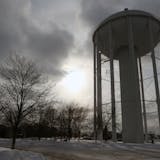Detours are inconvenient and time-consuming and sometimes mysterious, when drivers wonder why they're being forced to go miles out of the way.
Last weekend, for instance, the Minnesota Department of Transportation shut down westbound Interstate 94 between I-35E and Hwy. 280 in St. Paul. The posted detour took drivers north on I-35E to I-694, then west to I-35W and finally south to Hwy. 280 where they could reconnect with I-94. Or they could stay on I-35W and catch I-94 in downtown Minneapolis.
The I-694 route was much longer than having drivers cut across on Hwy. 36 or major east-west city streets such as Larpenteur Avenue.
So how did MnDOT choose it?
Ron Rauchle, a west area engineer for MnDOT, explained that city and county roads are not designed to absorb freeway traffic, and some state highways are not either.
"When we have a detour that is necessary due to road or bridge construction, we will detour traffic onto MnDOT roads designed for that higher volume of traffic," he said. "Keeping them on the state highway system is the preference."
In the case of the I-94 closure, that meant keeping freeway traffic on freeways, even if it meant a longer, circuitous route. "We detour onto a similar type of road," said Tiffany Dagon a MnDOT pavement engineer.
Rauchle said in rare situations, MnDOT will detour traffic onto a county or city street. But if it does so, the agency must pay the road's owner for extra wear and tear or for any upgrades that a city or county would make to accommodate extra vehicles.


